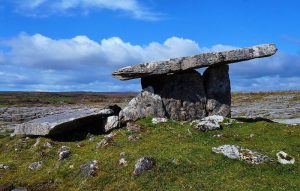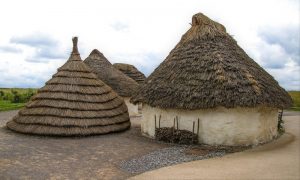Stone Age
The term "Stone Age" was given at the end of the 19th century by the Danish scholar Christian J. Thomsen, who devised a framework for the study of the human past, known as the "Three Ages System". The basis of this framework is technological because it revolves around the notion of three successive periods or ages: Stone Age, the Bronze Age and the Iron Age, each age being technologically more complex than the previous one. Thomsen thought about this idea after noticing that artifacts found in different archaeological sites showed some kind of regularity in terms of the material with which they were made because in these, there were always tools made of stone, bronze artifacts in layers over the deeper layers and, finally, artifacts made of iron were found closer to the surface. This suggests that metal technology developed later than tools made of stone.
What is the Stone Age?
It is the prehistoric period in which human beings developed tools made of stone, and in which human evolution, the discovery of fire and the use of caves as houses took place. It was the stage in which man's dispersion throughout the world began.
Stages of the Stone Age
The Stone Age was divided into three different stages that are:
- Paleolithic Stage or Ancient Stone Age: begins with the first production of stone artifacts, approximately 2.5 million years ago, until the end of the last Ice Age. It is considered to be the longest period of the Stone Age. The main evidence is fossilized human remains and stone tools, which gradually increased in complexity. On the basis of the techniques employed and the quality of the tools, there were several stone industries that were known as “lithic” industries.
- The Mesolithic or Middle Ages: in purely scientific terms, the Mesolithic begins at the end of a period known in geology as the last cold click, which marks the end of the Ice Age. This period culminates when agriculture This is the time of the last hunter-gatherers. Because agriculture developed at different times in different regions of the world, there is no single date to mark the end of the Mesolithic period. Important changes took place on our planet. As the climate became warmer and the ice melted, some areas in the northern latitudes rose as they were released from the weight of the ice. Sea levels rose, submerging the low-lying areas, causing great changes to the earth all over the world.
- The Neolithic or New Stone Age: begins with the introduction of agriculture in the Near East, in southeastern Europe, eastern Asia, and even later in other regions. This is the time when the cultivation of cereals and the domestication of animals were introduced.
Characteristics of the Stone Age
Among the most outstanding characteristics of the Stone Age we mention:
- It starts from the last glaciation.
- There were great advances and discoveries that evolved
- Fire
- Weapons were created to be used in hunting and fishing.
- Canoes and boats were made.
- Man’s intellectual capabilities were developed.
- Sedentarism began, so tents and huts were created.
- Materials other than stone were used to manufacture weapons.
- Agriculture was born.
How the Stone Age man lived
Thanks to fire discovery, man increased his survival chances because fire was a source of heat for cold climates. They were gatherers, scavengers and hunters, although they are not considered to be very good at this. With time, they were improving their capacities and adapting to the environment. Some scientists consider that they were dedicated to gather fruits, roots and seeds to feed themselves. Homo erectus introduced the first hunting techniques to catch large animals. Most men lived in small nomadic groups in caves. All members had the same functions and their main purpose was to survive. It is not known exactly if they had any religion, but it is believed because of funerary rituals.
Stone Age tools and utensils
The main tool used and manufactured was made of stone. This stone was known as flint and was easy to polish and carve. Axes, punches, hammers were made, all of them quite rudimentary elements carved by hand. Bifaces, burins, hand axes, spear tips, Clovis tips, knives and scrapers were some of the most used tools.
Art
The main type of art during Stone Age was rock art, which represented the need to tell what happened every day. The first paintings found inside the caves showed a story of the battles in which they were involved. Sometime later, the paintings were also made outside the caves.
Economy
The economy of the Stone Age was based on the exchanges that began with the collection, the accumulation of different foods, animals domestication and the manufacture of weapons and canoes used for hunting.
Architecture
It consisted of a set of constructions made of stone. They built caverns or caves, huts or cabins and palafittes that were constructions made of wood. Among the production materials, they used animal bones, skins and branches for roofs. According to historians, there were funeral pantheons, which were large stones placed in front of a tomb.
How to cite this article?
Briceño V., Gabriela. (2019). Stone Age. Recovered on 3 January, 2025, de Euston96: https://www.euston96.com/en/stone-age/










